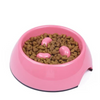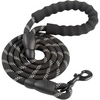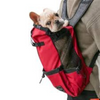The arrival of a baby in a family is an exciting time, but it can also be stressful, for both parents and pets. If you have a dog, preparing your pet for the arrival of the baby is essential to ensure the safety and well-being of all family members.
In this article, we'll explore the important steps to preparing a dog for the arrival of a baby.
Understanding the impact of the arrival of a baby on your dog
The first step in preparing your dog for the arrival of a baby is to understand the impact it can have on your pet. A baby brings significant changes to the family's daily life, which can disrupt your dog's emotional balance. Here are some of the possible changes and their impacts on your dog:
-
Routine changes
A baby brings a major change to the family's daily routine. Sleep times, walks and playtime can be disrupted. Your dog may need to adjust to this new routine.
-
New sounds and smells
Babies make a lot of noise, and there are new smells associated with a baby, like diapers and baby products. Your dog will need to get used to these sensory stimuli.
-
Less attention
The time you spend with your dog may be reduced when you are caring for a baby. It is important to schedule quality time with your dog to maintain the emotional bond.
-
Changes in space
The baby's room may need to be prepared, which may mean your dog loses space he used to use. It is essential to create a new comfortable space for your dog.
Preparation before the baby arrives
Preparing before the baby arrives is crucial to making the transition easier for your dog. Here are some steps to follow:
-
Consult a veterinarian
Before the baby arrives, make sure your dog is healthy by consulting your veterinarian. Discuss any problematic behaviors or anxiety you have observed and ask for advice on managing these problems.
-
Work on obedience
A well-trained dog is easier to manage when the baby arrives. Make sure your dog responds well to basic commands like “sit,” “down,” “stay,” and “drop.” You may consider taking training classes if necessary.
-
Expose your dog to new situations
Your dog must get used to the new sensations associated with the arrival of the baby. Let him smell baby items, like diapers and clothes, and play recordings of babies crying so he gets used to the new sounds.
-
Reorganize your dog's space
If the baby's room encroaches on your dog's space, rearrange it in advance. Create a new comfortable space for your dog with his bed and toys.
-
Introduce routines
Start establishing routines similar to those you will have when the baby is here. This may include walking and meal times. Your dog will gradually adapt to these changes.
The arrival of the baby
When the baby arrives, it is essential to handle the first meeting between your dog and your newborn with care. Here are some tips for a smooth transition:
-
Gradual introduction
Let your dog smell the baby's clothes before the first meeting. When you bring the baby home, have someone else hold the baby while you greet your dog first.
-
Rewards and positive reinforcement
Reward your dog with treats and praise when you introduce the baby. Associate positive experiences with the presence of the baby for your dog.
-
Monitor interactions
Pay attention to your dog's reactions around the baby. If your dog shows anxiety or aggression, consult a dog behavior professional for help.
-
Maintain attention on your dog
Even with a baby in the house, it's essential to devote time and attention to your dog. Take walks together, play and cuddle your dog to maintain the emotional bond.
Long-term management
Long-term management of the relationship between your dog and baby is just as important as initial preparation. Here are some tips to ensure harmonious cohabitation:
-
Constant supervision
Never leave your dog alone with the baby, especially if you have concerns about his behavior.
-
Teach Boundaries
Teach your dog to respect boundaries around the baby. Use safety gates if necessary to separate the two when you cannot supervise.
-
Continuing education
Continue to work on your dog's obedience and behavior. If problems arise, consult a dog behavior professional.
-
be patient
The transition for your dog can take time. Be patient and understanding with your pet during this time of change.
Preparing your dog for the arrival of a baby
Preparing your dog for the arrival of a baby takes planning and patience. By understanding how the baby's arrival will impact your dog, preparing ahead of time, and following simple steps, you can make the transition easier for your pet.
A harmonious relationship between your dog and baby is possible with constant supervision, ongoing education, and a commitment to maintaining your dog's well-being.













































